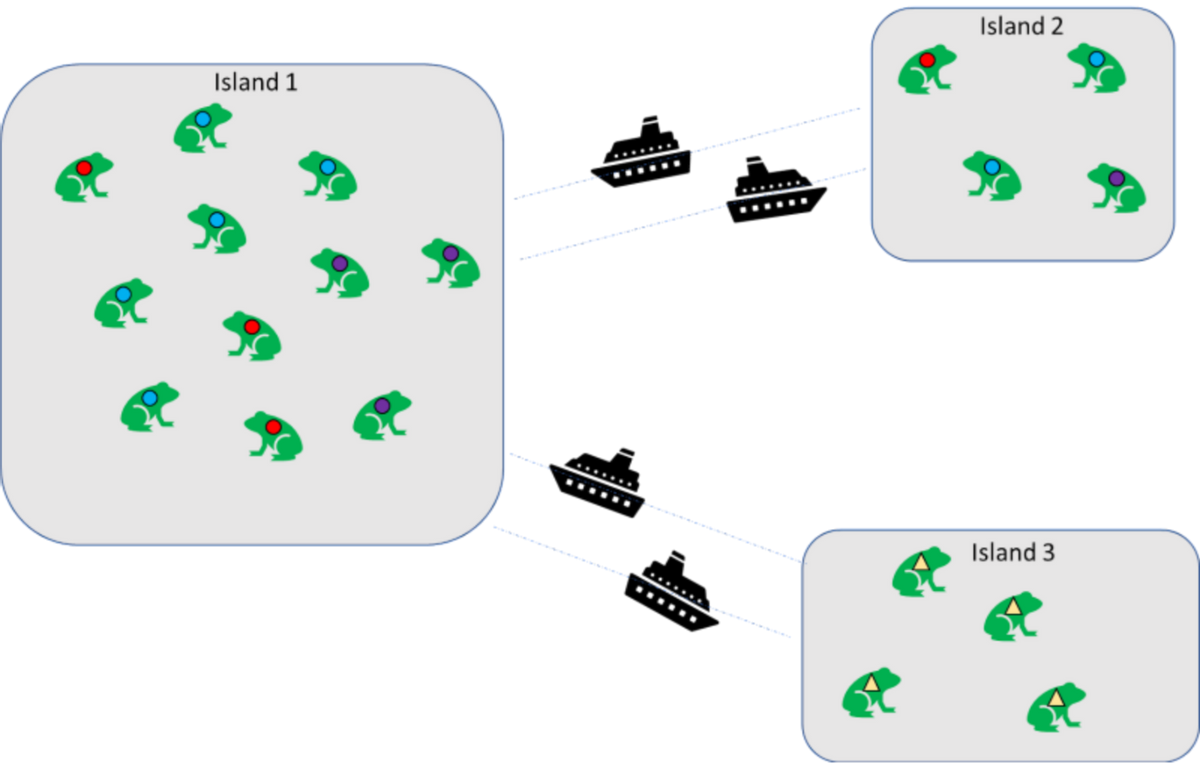Imagine three islands, each with a population of frogs. There are approximately 1,100 frogs on Island 1, 400 on Island 2, and 400 on Island 3. Researchers estimate that these populations have been separated for 800 years. Individuals in these populations show variation in markings on their body by shape and color. Frogs on Islands 1 and 2 have circle markings that are either red, blue, or purple. All frogs on Island 3 have yellow triangle markings. The islands recently became a tourist destination, with new passenger boats connecting Island 1 and Island 2, and Island 1 and Island 3 (there is no boat that goes between Island 2 and Island 3). part 1:If frogs from Island 1 migrate to Island 3 but are unable to reproduce with the frogs on Island 3, then these populations would be classified as different species according to the Biological Species concept. agree or disagree part2: If frogs are able to sneak onto boats and move between the islands via the current routes, then gene flow between these islands will result in increased genetic variation on each of the three islands. agree or disagree
Imagine three islands, each with a population of frogs. There are approximately 1,100 frogs on Island 1, 400 on Island 2, and 400 on Island 3. Researchers estimate that these populations have been separated for 800 years. Individuals in these populations show variation in markings on their body by shape and color. Frogs on Islands 1 and 2 have circle markings that are either red, blue, or purple. All frogs on Island 3 have yellow triangle markings.
The islands recently became a tourist destination, with new passenger boats connecting Island 1 and Island 2, and Island 1 and Island 3 (there is no boat that goes between Island 2 and Island 3).
part 1:If frogs from Island 1 migrate to Island 3 but are unable to reproduce with the frogs on Island 3, then these populations would be classified as different species according to the Biological Species concept.
agree or disagree
part2: If frogs are able to sneak onto boats and move between the islands via the current routes, then gene flow between these islands will result in increased
agree or disagree

Trending now
This is a popular solution!
Step by step
Solved in 2 steps









